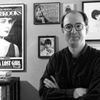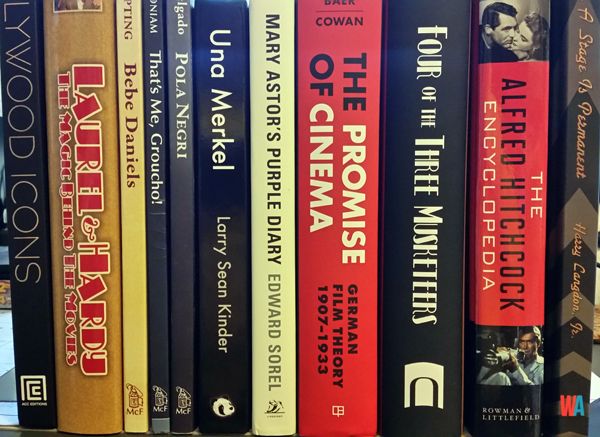
Best Books of 2016
It’s been a surprisingly good year for film books. Whether you are into biographies, film history, pictorials, “making of” books, or critical studies, there was something for just about everyone. This year’s list may top last year’s, which was also bountiful. As a matter of fact, there were so many worthwhile books in 2016 that I was forced to split this article into two pieces. In the coming days, I will post another article with just as many recommendations, if not more.
A House Divided
With Newt Gingrich’s call for a new House Un-American Activities Committee (HUAC), there may be no relevant book than Hollywood Divided: The 1950 Screen Directors Guild Meeting and the Impact of the Blacklist (University Press of Kentucky) by Kevin Brianton. This new title centers on a now legendary meeting held by the Screen Directors Guild in 1950 (at the height of the anti-communist “Red Scare”) to consider the adoption of an industry loyalty oath. Among those present at the meeting were some of the biggest names in Hollywood―Cecil B. DeMille, John Ford, John Huston, Frank Capra, William Wyler, Joseph L. Mankiewicz, George Stevens, Fritz Lang, and Rouben Mamoulian, among others. The background to that meeting, its effect on the film industry, who was conservative, who was liberal, and the way the meeting had been depicted in the press is at the heart of this fascinating and provocative new book.
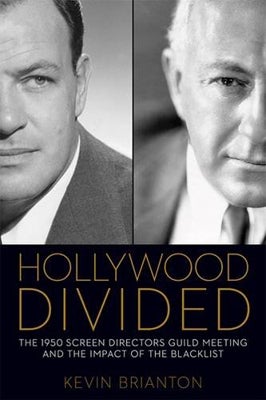
Hollywood Divided: The 1950 Screen Directors Guild Meeting and the Impact of the Blacklist
Film is Dead, Long Live the Movies
A Thousand Cuts: The Bizarre Underground World of Collectors and Dealers Who Saved the Movies (University Press of Mississippi) by Dennis Bartok and Jeff Joseph is a candid exploration of a now vanishing subculture. Drawn largely from interviews with their subjects, this intriguing work tells the stories of little known and famous collectors alike. There’s a young Leonard Maltin attending private screenings of rare films in NYC—alongside Susan Sontag, TCM host Robert Osborne discussing Rock Hudson’s secret film vault, and Academy Award–honoree Kevin Brownlow recounting his decades-long quest to restore the 1927 Napoleon. At the center of many of the stories found in A Thousand Cuts was the FBI’s and Justice Department’s campaign to harass, intimidate, and arrest film dealers and collectors in the early 1970s. Among the victims was Planet of the Apes star Roddy McDowall, who was arrested in 1974 and was forced to name the names of other collectors. Highly recommended.
Also released this year are two not unrelated books, A Light Affliction: a History of Film Preservation and Restoration (lulu.com) by Michael Binder, and In Search of Lost Films (BearManor Media) by Phil Hall. The latter work looks at the surprising number of important films believed to be lost, dating from the silent era to the 1970s, by the likes of Alfred Hitchcock, Orson Welles, Vincente Minnelli, Stanley Kubrick, and others. Read ‘em and weep. Read ‘em and weep.
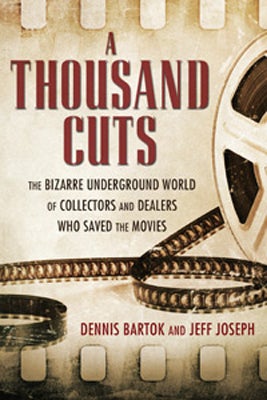
A Thousand Cuts: The Bizarre Underground World of Collectors and Dealers Who Saved the Movies
Napoleon
Just recently, and at last, Abel Gance’s Napoleon (1927) has been released on DVD and Blu-ray. Digitally restored by the BFI National Archive and Academy Award-winning film historian Kevin Brownlow, this multi-disc set features a complete 2K restoration of a five-and-a-half-hour version of the film, Carl Davis’ electrifying, monumental score, a feature-length commentary, documentaries, an illustrated 60-page book, and more. It’s dizzying, and brilliant. The story behind this legendary epic film—and oh what a story it is—is told in A Revolution for the Screen: Abel Gance's Napoleon (Amsterdam University Press) by Paul Cuff, one of the contributors to the above mentioned BFI release.
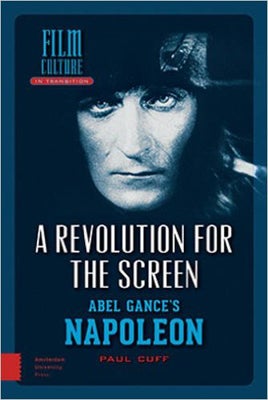
The Purple Diaries
Mary Astor was one of the biggest film stars of the 1930s and 1940s. Her career peaked in 1941, the year she co-starred alongside Humphrey Bogart in The Maltese Falcon, and won an Academy Award for Best Supporting Actress for her performance in The Great Lie. That was five years after a scandal nearly ruined her.
In 1936, Astor’s second husband began a custody battle over their four-year-old daughter. He threatened to introduce the actress’ diary in the proceedings, which detailed her affairs with celebrities, including the celebrated playwright, theater director and producer George S. Kaufman. The diary was never formally offered as evidence, but Astor’s ex-husband and his lawyers constantly referred to it, and its notoriety grew. Everyone wondered who and what was in it? With the support of the Astor family, including access to the photographs and memorabilia of Astor’s estate, The Purple Diaries: Mary Astor and the Most Sensational Hollywood Scandal of the 1930s (Diversion Publishing) by Joseph Egan gives a detailed account of the custody battle that, for a time, pushed the Spanish Civil War and Hitler’s Olympic Games off the front pages of America.
A different, after the fact, but no less entertaining take on these events can be found in Mary Astor's Purple Diary: The Great American Sex Scandal of 1936 (Liveright) by Edward Sorel. Here, the famed illustrator and cartoonist recounts his own lifelong obsession with the sensational trial, which for Sorel began in 1965 when he began pulling up the linoleum of his kitchen floor apartment and discovered a hidden treasure—issues of the New York Daily News and Daily Mirror from 1936 reporting on scandalous events taking place in Hollywood. Sorel’s book features more than sixty original illustrations.
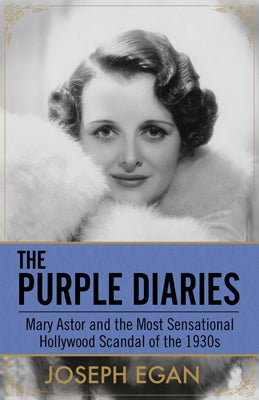
Everything Orson Welles
Few directors or actors are truly worthy of more than one well done biography, let alone a multi-volume work. Orson Welles is one of those exceptions. In Orson Welles, Volume 3: One-Man Band (Viking), the third volume in his epic four-volume survey of Welles’s life and work, the celebrated British actor and writer Simon Callow details one of the most complex artists of the twentieth century, whose glorious triumphs and occasional spectacular failures in film, radio, theater, and television were each marked an individual and wholly original voice. This third volume begins with Welles’ self-exile from America, and his realization that he could function only to his own satisfaction as an independent film maker, a so-called “one-man band.”
Also out this year is Citizen Kane: A Filmmaker's Journey (Thomas Dunne Books) by Harlan Lebo, a study of a singular film masterpiece―of how it was created and how it was almost destroyed.
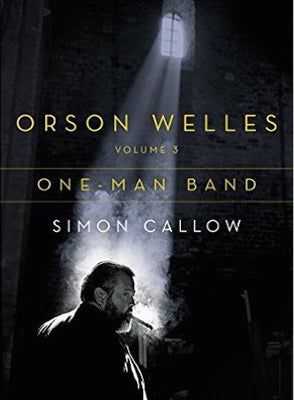
Everything Alfred Hitchcock
Decades after his last motion picture, Alfred Hitchcock is still regarded by both critics and fans as one of the great filmmakers. His long career ran from the silent era through 1976, the year of his final feature. The Alfred Hitchcock Encyclopedia (Rowman & Littlefield) by Stephen Whitty covers it all―the influences, the early British silent films, the later thrillers, the American television shows, the actors, screenwriters, collaborators, themes, and even the cameos. At 548 pages, it is an impressive work, something one can dip into time and again.
Also out, from the acclaimed literary biographer Peter Ackroyd, comes the curiously titled Alfred Hitchcock: A Brief Life (Nan A. Talese). At nearly 300 pages, this biography is anything but a gloss on one of the more convoluted directors in film history; but then, Hitch deserves at least three times that number of pages, so perhaps this is a brief biography after all. Just as the director did in his own films, a handful of iconic film stars make cameo appearances in this book: Cary Grant, Grace Kelly, and James Stewart despair of Hitchcock’s detached directing style and, most famously of all, Tippi Hedren endures the cuts and bruises of a real-life flock of birds.
Speaking of Tippi Hedren, the actress has penned Tippi: A Memoir (William Morrow), which looks back at her film career and work as an animal rights activist. There are cameo appearances here as well, including Hedren’s daughter, actress Melanie Griffith, and granddaughter, actress Dakota Johnson.
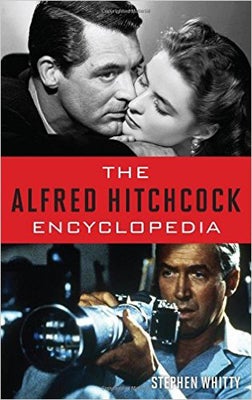
Everything Laurel & Hardy
Laurel & Hardy: The Magic Behind the Movies (Bonaventure Press) by Randy Skretvedt is a detailed account of how the beloved comedy team made their many classic films. At 632 pages (and with 1,000 photographs, many of them rare), this 8.5” by 11” hardcover work stands as one of the most comprehensive books ever issued on any actor or team of actors.
Also out this year is Laurel and Hardy: The Lobby Cards: A Color Collection (CreateSpace) by I. Joseph Hyatt.
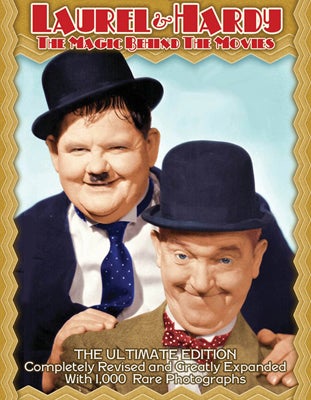
King of Jazz
King of Jazz: Paul Whiteman's Technicolor Revue (Media History Press) by James Layton and David Pierce, with a foreword by Michael Feinstein, tells the story of the making, release, and restoration of Universal's 1930 Technicolor musical extravaganza. Arguably, King of Jazz was one of the most ambitious films ever to emerge from Hollywood: just as movie musicals were being invented in 1929, Universal Pictures unleashed its purse strings to bring together Paul Whiteman, leader of the country's top dance orchestra, John Murray Anderson, director of spectacular Broadway revues, and an elite ensemble of dancers and singers including Bing Crosby in his first screen appearance. And what’s more, it was done in glorious new Technicolor. King of Jazz is an impressive film—especially seen on the big screen, and so is this sumptuous book, a kind of coda to the author’s remarkable 2015 title, The Dawn of Technicolor: 1915–1935.
For those who want to delve deeper into the genre, also out this year is Unsung Hollywood Musicals of the Golden Era: 50 Overlooked Films and Their Stars, 1929-1939 (McFarland) by Edwin M Bradley.
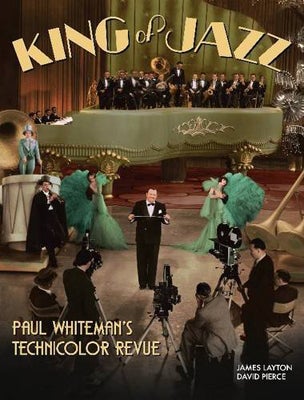
The Marx Brothers
One of the finest books of the year is Four of the Three Musketeers: The Marx Brothers on Stage (Northwestern University Press) by Robert S. Bader, a recognized authority on the famed band of brothers. Thoroughly researched and highly readable, this 500+ page book tells the story of the foursome’s hardscrabble early years honing their act in front of live audiences. Beginning with Groucho’s debut in 1905, Bader traces the origins of the characters and situations that would later come to be beloved by film goers around the world. In doing so, Bader vividly sketches the world of 1920’s vaudeville as the comedy act was on the brink of fame.
There have been many books on the Marx Brothers. Bader’s book is one of the best. As Dick Cavett said, “Who would have dreamed that there could be much, much more to learn in still another book about the Marx Brothers? Not I. And yet, Robert Bader—focusing on the under-researched vaudeville days of the hilarious siblings—has gone where no man went before, discovering a treasure trove of Marxiana to delight the hearts and minds of those of us who can never get enough.”
Also recently released are two related titles, Gimme a Thrill: The Story of I'll Say She Is, The Lost Marx Brothers Musical, and How It Was Found (BearManor Media) by Noah Diamond, and That's Me, Groucho! The Solo Career of Groucho Marx (McFarland) by Matthew Coniam. Each are worth checking out. And speaking of theatrical siblings, also out this year is REELS & RIVALS: Sisters in Silent Films (BearManor Media) by Jennifer Ann Redmond.

Two from Academia
These two titles, both published by university presses, are each groundbreaking works which impress not only with the amount of research that has gone into them, but also for their rich detail and readability. Girls Will Be Boys: Cross-Dressed Women, Lesbians, and American Cinema, 1908-1934 (Rutgers University Press) by Laura Horak examines the history of gender-bending female characters in films from the early 20th century. What’s surprising is that there were hundreds of such films, and that some of them included stars we know today, like Greta Garbo, Marlene Dietrich, and Katharine Hepburn.
Menus for Movieland: Newspapers and the Emergence of American Film Culture, 1913–1916 (University of California Press) by Richard Abel explores the way one traditional medium aided another then new medium. Abel offers a richly textured view of early film stardom, early film criticism, advertising campaigns, and even fan activities on both the local and national level. Published late last year, this fascinating book is a fascinating read.
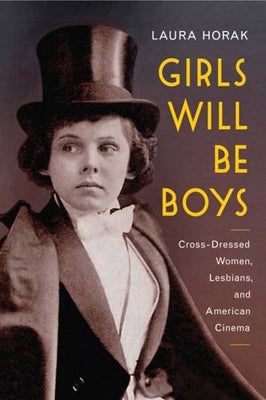
Girls Will Be Boys: Cross-Dressed Women, Lesbians, and American Cinema, 1908-1934
In Memoriam
Though it came out late last year and went largely unnoticed, Monty Banks 1920-1924 Filmography (CreateSpace) by Robert S. Birchard with Rob Farr, Robert James Kiss, Steve Massa, Karl Thiede and the great Sam Gill well is worth noting. This slim, self-published volume surveys the career of an underappreciated early comedian and film director. It is also the last book by Birchard, a much admired film historian, film editor, and Cinecon president who passed away earlier this year. Robert Birchard is dead. Long live his many works.

There are many more titles that could have been included in this piece. So many in fact that another piece will follow in a few days. So, don’t touch that dial. And stay tuned for “Son of Best Film Books of 2016.”
Thomas Gladysz is an arts and entertainment writer who has been contributing to the Huffington Post since 2010. He is also the founding director of the Louise Brooks Society, an online archive and international fan club begun in 1995. Gladysz has written many articles on the actress, and is currently working on The Films of Louise Brooks for a publisher yet to be determined.
